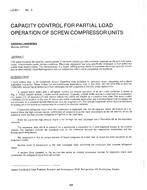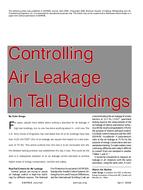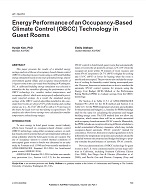In conventional airtight buildings, the architect has considerable freedom to decide how much the external environment will influence the internal heating, cooling, and ventilation loads. The services engineer provides the plant and equipment required to deal with these loads. This division of labor could lead to undesirable consequences in the case of dynamic insulation, a form of air permeable construction where bulk air flow “through” the building envelope may be used to either enhance or restrict the conductive heat and mass diffusion fluxes. Small changes in temperature (indoor and out) and wind speed and direction will influence the behavior of a dynamically insulated envelope since the internal and external environments are much more intimately coupled. Buildings employing dynamic insulation thus require good environmental design principles to be applied. The objective of this paper is to lay down rigorous principles that will form the basis of guidelines to architects and building services engineers on how to take account of the ever changing external environment when designing durable and comfortable buildings employing dynamic insulation.
Units: SI
Citation: ASHRAE Transactions, vol. 106, pt. 1
Product Details
- Published:
- 2000
- Number of Pages:
- 19
- File Size:
- 1 file , 460 KB
- Product Code(s):
- D-7295


